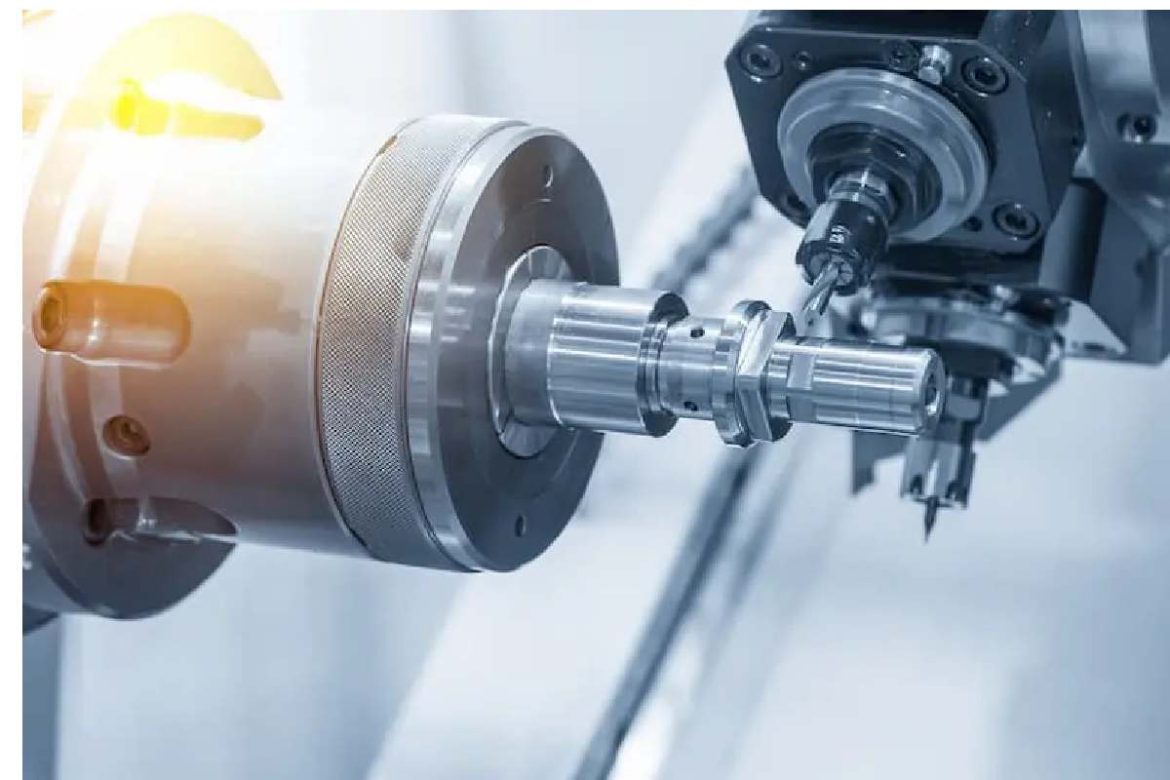In this article we look in detail at CNC turning, what parts can be made with it, what its advantages are and how it compares to other types of subtractive manufacturing.
Table of Contents
What is CNC turning?
CNC turning is just one form of Computer numerical control machining, an umbrella term used to describe a series of similar subtractive manufacturing methods including both milling and cutting. Operated via digitalised design instructions, CNC turning uses a high-speed rotating metal bar positioned inside a chuck. The bar is fed into a lathe with portions of it removed by a precision cutting tool to achieve a required shape. Different cutting tools can be utilised to create a variety of contours and dimensions. Typically, CNC turning is used to mass produce cylindrical objects and components such as rings, tubes and other more complex circular shapes.
Types of CNC turning
There are a number of different types of CNC turning, including:
- Taper turning which uses a gradual reduction in diameter during operation to form a tapered shape.
- External turning manipulates the outer part of a workpiece and is one of the most common turning processes.
- Internal turning is when the inner diameter of the workpiece is machined and modified. Horizontal, longitudinal turning are versions of internal turning.
What can you make using CNC turning?
CNC turned parts are used in a variety of industries including electronics, manufacturing, telecommunications and automotive. They are made using a diversity of materials including aluminium, steel, plastic, copper and brass.
Typical components made using CNC turning include:
- Pins
- Nuts
- Connectors
- Studs
- Rivets
- Fasteners
- Nozzles
- Screws
- Rods
What are the benefits of CNC turning?
There are several key benefits to using CNC turning. Firstly, because of the speed at which parts can be produced, it is an ideal technology for fast turnaround projects. Along with speed, the accuracy at which the parts can be produced mean final products and components are ideal for industries where precision is paramount.
The large variety of materials suited to CNC turning is also a big advantage in terms of the scope of design possible, as well as the varying sizes of products that can be produced with turning. Further choice comes with a diversity of finishing options including galvanising, polishing, painting, nickel plating and various colour options.
What are the disadvantages of CNC turning?
Like other CNC machines, turning machines are expensive compared to those operated manually. Because CNC machines are computer controlled, they require the necessary skills from a trained operator, and in the event of a break down, highly skilled professionals are required to fix problems which can cause interruptions to production.
How is turning different from other CNC machining?
To get the full picture on how CNC turning is used, it’s useful to look at other forms of CNC machining. The fundamental difference in other subtractive processes such as milling and plasma cutting is that spinning tools are used to move along a stationery workpiece to cut it. With CNC turning, the workpiece itself rotates against stationery cutting tools.
CNC milling
Milling is often used for creating slots and holes as well as shaping objects. The cutting tool shapes the outer area of the workpiece which can be carried out in different directions on different axes, and also, at differing speeds and pressure.
CNC plasma cutting
A CNC plasma cutting machine uses a hot jet of ionised gas (plasma) to cut through conductive metals and form different shapes. They too are controlled numerically by computer. Plasma cutting is used extensively in automotive repair, construction and scrapping industries. It is a highly precise and speedy form of cutting and also, can be undertaken at a relatively low cost.
CNC laser cutting
CNC lasers cut through sheet metal using the beam from a laser to melt the material and form precise shapes. A high-pressure gas is used to remove molten material in the process. It is a technology flexible enough to work with a large range of materials, produces short lead times, causes relatively low damage and can produce complex and sophisticated shapes.
CNC routers
A CNC router is used for tasks such as cutting builders’ foam, engraving granite, cutting cardboard templates and milling brass. It is a tool which replaces a hand-held version and thanks to its digital control, produces more accuracy and consistency.
Conclusion
Understanding the different forms of CNC machining puts CNC turning into a greater context and it’s easy to see with so many different product requirements in a modern world, why the specific results produced by turning will continue to be sought on a global scale. CNC machining remains a thriving sector and with further developments in technology and machinery, alongside the reliance of key industries upon it, it looks set to remain a dominant form of manufacturing.


